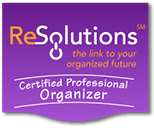
May is National Moving Month. If you are planning to move, here are some tips for packing:
- Start early: Packing takes a lot of time and effort, so start as early as possible. Begin by packing items that you will not be needing soon, such as out-of-season clothing, books, and holiday decorations.
- Declutter: Moving is the perfect time to declutter your home. Get rid of items that you no longer need or use. This will not only save you time and effort when packing, but it will also save you money on moving costs.
- Label boxes: Label each box with its contents and the room it belongs to. This will make unpacking much easier and save you time when you arrive at your new home. It may seem like overkill, but label two sides as well as the top of box as you will not know how those boxes may be stacked once in your new abode.
- Use sturdy boxes: Make sure to use sturdy boxes and packing materials to protect your belongings during transport. You can purchase moving boxes from moving companies, hardware stores, or online.Often, liquor stores will let you take their heavy boxes. Egg crates from grocery stores work well, too.
- Pack fragile items carefully: Use bubble wrap or packing paper to wrap fragile items, and make sure to label the box as fragile. You can also use towels, blankets, or clothing to provide extra cushioning.
- Pack heavy items in small boxes: Pack heavy items, such as books and dishes, in small boxes to prevent them from becoming too heavy to carry.
- Use bags for soft items: Use trash bags or large plastic bags to pack soft items, such as bedding, pillows, and stuffed animals. This will save space in your moving truck and make it easier to transport these items.
- Pack an “essentials” box: Pack a box with essentials that you will need for your first night in your new home, such as toiletries, a change of clothes, and bedding. Label this box or boxes “Open Me First”, and prominently indicate the room in which to place it.
- Consider hiring professionals: If you have a lot of items to move or fragile items that require special attention, consider hiring professional movers to pack and transport your belongings. Reputable companies will come to your current home to see what you must move and, more importantly, to give you an estimate of the cost.
- Placement of boxes: Ask your movers to make sure the boxes are placed such that the labels are facing out so that you can see what is in each box.
I have helped numerous clients move. By so doing, I have found that the more organized you are in the packing process, the easier it is to settle into your new home.
Photo: Pixabay

 Join My Email List
Join My Email List








